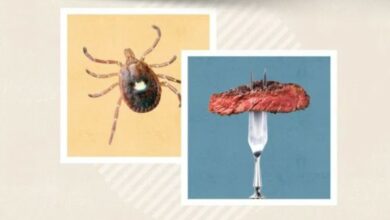Synergistic effects of bee venom, hesperidin, and piperine with tamoxifen on apoptotic and angiogenesis biomarker molecules against xerographic MCF-7 injected rats

Breast cancer ranks as the second leading most significant of mortality for women. Studies have demonstrated the potential benefits of natural compounds in cancer treatment and prevention, either in isolation or in conjunction with chemotherapy. In order to improve Tamoxifen’s therapeutic efficacy in in-vivo studies, our research sought to determine the effects of hesperidin, piperine, and bee venom as natural compounds, as well as their combination effect with or without Tamoxifen. First, 132 female albino rats were equally divided into six groups and five subgroups, and breast cancer was induced in the selected groups by xenografting of MCF7 cells. Second, the effect of single and best ratio combinations treatment from previous in vitro studies were selected. Next, tumorous mammary glands were collected for apoptotic and antiapoptotic biomarkers and cell cycle analysis. Single or combined natural products with or without Tamoxifen revealed a significant up-regulation in apoptotic genes Bax and Casp3 and a downregulation of antiapoptotic and angiogenesis genes Bcl-2 and VEGF genes. We found that cell cycle arrest in the G0/G1 phase was exclusively caused by Tamoxifen and/ or hesperidin. However, the cell cycle arrest in the G2/M phase is a result of the combination of piperine and bee venom, with or without Tamoxifen by using the flow cytometric technique. Our research concludes that bee venom, hesperidin, and piperine can synergistically enhance to increase Tamoxifen’s efficiency in the management of breast cancer.
Introduction
Breast cancer is considered the most common cancer in women globally and the primary cause of cancer-related deaths in this population. This tumor can spread to other parts of the body but generally begins in the inner lining of lobules or milk ducts1,2. Many forms of breast cancer exist, such as ductal and lobular carcinomas, which represent an important percentage of cancers in women3. The most prevalent cancer among Egyptian women is breast cancer (16.4%), which is followed in frequency by non-Hodgkin lymphoma (5.4%), bladder cancer (7.9%), and lung cancer (4.9%)4. Radiation therapy, chemotherapy, immunotherapy, surgery, and hormone therapy are among potential possibilities for treatment. Even with advancements in cancer treatment, over 80% of patients still face significant problems from side effects and drug resistance4,5. Tamoxifen (TMX) is a commonly prescribed medication for the treatment of estrogen receptor-positive breast cancer. TMX has also been proposed as a long-term therapeutic option for patients with premenstrual breast cancer6. Ovarian, endometrial hyperplasia, and carcinomas, as well as vein thrombosis and pulmonary embolism, are all serious side effects of such a lengthy treatment7,8. Thus, chemosensitization of tumor cells to conventional treatment using non-toxic natural chemicals is a new and unique strategy. These natural compounds are aimed at increasing the cytotoxic efficiency of anticancer drugs, limiting their harmful side effects, and delaying the emergence of acquired chemoresistance9. Free radicals have a well-established involvement in the beginning of different disorders. Plant-based antioxidants may diminish the effects of free radicals, hence reducing oxidative damage. This leads to an increase in defense against illnesses including cancer and coronary heart disease10,11.
Natural compounds such as bee venom (BV), hesperidin (Hes), and piperine (Pip) were shown to exhibit anti-cancer properties when applied in isolation or in conjunction with anti-cancer medications5,12. Flavonoids like Hes was found in significant amounts in a variety of vegetables and fruits13,14. It is an affordable byproduct that contains essential bioflavonoids found in citrus fruits like lemon and orange15. Hes has a variety of health benefits, including anti-allergic, anti-oxidant, and anti-inflammatory properties16. Also, it has anticarcinogenic effects in the tongue, esophagus, colon, and urinary bladder in rat carcinogenesis models17.
Pip plant, usually referred to as black pepper, produces piperine, a common alkaloid, primarily in its fruits and roots18. Piperine’s anti-inflammatory, immunosuppressive, and antibacterial activities have all been studied extensively. Furthermore, several additional studies have demonstrated the chemopreventive or anti-cancer properties of Pip19,20,21,22. While, rheumatoid arthritis and other conditions have long benefited from the anti-inflammatory properties of bee venom, which is also utilized for relieving pain. Phospholipase A2 (PLA2) and melittin are the two main compounds found in BV. Melittin the major active component it has demonstrated anti-tumor and anti-apoptotic properties23. Our previous study used TMX to examine the possible synergistic anti-cancer effects of these three natural ingredients in vitro5. This work was carried out to investigate this effect in an in vivo model, and we expected that this combination would have a synergistic effect. As a result, we looked at the effects of these natural chemicals on (ER) positive breast cancer in rats when they were used alone or in combination with TMX.
Materials and methods
Chemical and reagents
Hes and Pip (Acros Organics, USA; Cat no. 123460050, 381450050). Bee venom (Apis Injeel ™, Heel GMBH, Germany). TMX (Nolvadex®, Astra Zenca Cambridge, UK), MTT [3-(4,5-Dimethylthiazol-2-yl)-2,5-diphenyltetrazolium bromide, Molecular probes, Eugene, Oregon, USA; Cat.no.V-13154)]. Dulbecco’s Modified Eagle’s Medium (DMEM) (GIBCO, New York, USA; Cat.no.11995073). Fetal bovine serum (GIBCO, Grand Island, New York, USA; Cat.no.10099133). Penicillin/streptomycin (Thermo Fisher Scientific; Waltham, MA, USA; Cat.no. SV30082). L-gluTMXine (Invitrogen, Grand Island, New York, USA; Cat.no. 25030024). Phosphate buffer saline PBS (pH 7.4). Trypsin-EDTA (Invitrogen, Mount Waverly, VIC, Australia; Cat.no. 25200056). DMSO (Sigma Aldrich, St. Louis, MO, USA; Cat no.673439).
Xerographic MCF-7 injected rats model
132 female albino rats aged (4–6) weeks and weighed approximately (150–170 g), were purchased from the National Cancer Institute (Cairo University, Egypt). The rats were housed at optimum temperature (23–25 °C, relative humidity 55%) with free access to drinking water and food, and adapted to laboratory conditions for 2 weeks before experimentations24. Cyclophosphamide (CTX) was injected intraperitoneally into rats at a dose of (50 mg/kg body weight) for four consecutive days to suppress their immune systems25. Human breast MCF-7 (#ATCC HTB-22) cells, have been obtained by the Center of Excellence for Research in Regenerative Medicine, and its Applications, (CERMA) Alexandria University, Egypt from the American Type Culture Collection (ATCC) organization. These cells were cultured in DMEM medium which was supplemented with 10% (v/v) fetal bovine serum (FBS) and 1% penicillin–streptomycin at 37 °C in humidified air with 5% CO2 cells. Later, after counting, a volume of 1 ml containing 1 × 107 MCF-7 cells was injected around the teat of the mammary gland intradermally. To initiate tumor formation, rats were given intramuscular estrogen injections (0.01 ml/kg body weight, Folon 5 mg/ml) twice a day before receiving the MCF-7 injection, which typically took about four weeks16,26.
Experimental design
The study protocols were according to the Faculty of Science’s Institutional Animal Care and Use Committee’s recommendations, Tanta University, Egypt with an ethical approval number (#IACUC-Sci-Tu-0404) also, the study is reported in accordance with ARRIVE guidelines (https://drive.google.com/file/d/1E0TZPW_qFnWZ_HM9jKhIY4q0h0aNYTxL/view?usp=sharing). The rats were equally divided into (6 groups and 5 sub-groups) 12 per group and subgroup as summarized in (Table 1):
At the end of the experiment, rats were euthanized by cervical dislocation under sodium pentobarbital anesthesia (300 mg/kg body wt) intraperitoneally32, The mammary glands were then extracted sterilely, snap-frozen in liquid nitrogen, and stored at – 80 °C. Using previously published techniques. we homogenized and removed tumor tissue for molecular analysis from the treated rats’ mammary glands, while other fresh sample sections were subjected to flow cytometric analysis33,34.
Analysis of gene expression by quantitative real-time PCR (qPCR)
Using the Gene JET RNA Purification Kit (Thermo Scientific, USA), total RNA was extracted from frozen mammary gland tissue of rats after grinding. To assess RNA amount and purity, a Nanodrop (Q5000, Quawell, USA) was employed. RNA (5 μg) was reverse transcribed using Quantiscript reverse transcriptase. Using the Step One Plus real-time PCR equipment (Applied Biosystems, USA) and specific primers, the relative expression of the BCL2-Associated X Protein (Bax), B-cell lymphoma 2 (Bcl-2), cysteine-aspartic proteases (Caspase 3), and Vascular endothelial growth factor (VEGF) genes. Also, β -actin was used as an internal control were determined (Table 2). The thermal cycling conditions, melting curve temperatures, and relative expression computation using 2−ΔΔCt were all carried out as before explained5,35.
Analysis of cell cycle by propidium iodide using flow cytometer
Using a flow cytometer and propidium iodide, we examined the cell cycle. Initially, we used 5 mL of 0.1% collagenase enzyme (Invitrogen, USA) for two hours to separate the tissues of the mammary glands. Next, we used a 50 mL Falcon tube with a 0.7 mm nylon mesh to filter the samples. The tubes were twice cleaned, centrifuged for five minutes at 4500 rpm, and then resuspended in PBS. After that, the cells were preserved in ice-cold ethanol and kept at – 20 °C for a whole day. The cells were resuspended in a propidium iodide (PI) solution containing 100 μl (0.02 mg/mL) PI, 0.1% v/v Triton X-100 in PBS, and 50 μl (0.2 mg/mL) RNase A, then washed twice with PBS and incubated for 30 to 60 min in dark under ambient temperature. The samples were examined using a standardize flow cytometer (Applied Biosystem, USA). We assessed the forward (FS) and side (SS) scatter in order to identify individual cells36.
Statistical analysis
We conducted statistical analysis using one-way analysis of variance (ANOVA) along with Duncan’s multiple range test (DMRT). We set the significance level as p < 0.05 in order to calculate mean differences. The obtained results were presented as mean ± SE. We used InStat and Graph Pad software programs to analyze the data.
Ethics approval
This study was conducted according to the ethical protocols of the Tanta University Faculty of Science’s Research Ethical Committee (#IACUC-Sci-Tu-0404), also, the study is reported in accordance with ARRIVE guidelines. (https://drive.google.com/file/d/1E0TZPW_qFnWZ_HM9jKhIY4q0h0aNYTxL/view?usp=sharing).
Consent for publication
The authors declare that they have agreed to the publication of this work.
Results
Assessment of Bax, Casp3, Bcl-2, and VEGF genes expression
The results of our investigation displayed that, in comparison to normal control and other treated groups, the expression of Bax was significantly (P < 0.01) lower in breast cancer rats. Bax expression levels were, however, significantly elevated by the administration of TMX, BV, Hes, and Pip either singly or in combination, with the groups receiving all four treatment compounds showing the highest levels. TMX and Pip showed noticeably higher expression levels than BV and Hes among the individual treatments. As shown in (Table 3, Fig. 1).
Fold change of Bax gene expression in the mammary gland of tumor bearing rats and treated with TMX alone and combined with BV, Hes, and Pip. a, b, c, d, e, f, and g = P < 0.001 if compared with each other groups except (GIIIα GVIA and GIVBα GVIA) = P < 0.01 and (GIα GIVA) = P < 0.05.
Furthermore, in comparison to normal control and other groups, our study demonstrated a significantly reduced (p < 0.01) in the apoptotic gene Caspase 3 expression in the rats with breast cancer. However, Caspase 3 expression was significantly increased by treatment with TMX, BV, Hes, and Pip either separately or in combination as described in (Table 4, Fig. 2).




